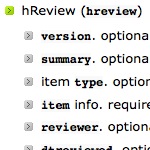Math in webpages
[fusion_builder_container hundred_percent=”yes” overflow=”visible”][fusion_builder_row][fusion_builder_column type=”1_1″ background_position=”left top” background_color=”” border_size=”” border_color=”” border_style=”solid” spacing=”yes” background_image=”” background_repeat=”no-repeat” padding=”” margin_top=”0px” margin_bottom=”0px” class=”” id=”” animation_type=”” animation_speed=”0.3″ animation_direction=”left” hide_on_mobile=”no” center_content=”no” min_height=”none”]
A little over a week ago, I was thinking about what might we do to improve the functionality of OpenCourseWare sites (more on this later). One idea I hit on, was a notion of “live math” where the equations would be presented in web pages, etc. and rendered as equations while at the same time being both editable/changeable and usable in computer algebra systems (e.g., Mathematica, MathCad, etc.). More recently, OEIT started talking with Math faculty about embedding equations within a system to facilitate discussion about pedagogy.Here’s some research I did on including equations in web pages/site that might have a social networking component (e.g., discussion of the page). I found a couple general discussions. Also, it appears, for the most part that equations get rendered as images. Some use their own syntax, some use LaTeX, some are WYSIWYG editors more approachable by non-mathematicians.
- LaTex Plugin for Confluence (enterprise wiki, a version of which is run at MIT)
- wpmathpub and WP LaTeX plugins for WordPress (blog software)
- Sitmo Equation Editor (WYSIWYG editor that creates a linkable/downloadable PNG image using a LaTeX parser)
- Live Math software (computer algebra system and equation editing functions, including web viewer/plugins for web browsers)
- DruTeX 5.x-1.3: This Drupal module can be used to display mathematics written in LaTeX.
- Mathematics Filter: This Drupal module allows for addition of mathematics filter to regular input filters.
When looking specifically for Ning-based solutions (software to create your own social network), I ran across this post:
I have realised that the ning site might need an equation editor so off i go at 1:42, after some serious searching no real solution, but found http://www.sitmo.com/latex generates latex images on the fly, however you have to download the image then upload it to the forum, wich is too much of a process i believe.
Source: futurecollege.org. (2008, August 20). experiment in adding unlike fractions, constructionism vs instructivism. Retrieved June 1, 2009 from futurecollege.org Web site: http://futurecollege.org/elearning/?p=40
So at first glance there doesn’t seem to be a really good Ning solution, but I did find a couple Ning-based math communities.
Aside: The idea of rendering math and having it be usable by computer algebra systems is not a new idea, it’s sorta been one of the holy grails of the math education community, since the late 1990s (well, that’s when I got involved with them).
Regarding OpenCourseWare: I wonder how/well CNXML and MathML from Connexions might work. Update: That might be the way to go. I also seem to recall a demo where one could cut and paste MathML from a web page into a computer algebra system.
Update: What about transforming LaTeX to MathML? Here’s one tool, MathToWeb that I found.[/fusion_builder_column][/fusion_builder_row][/fusion_builder_container]




I’m Sure you have seen this if not you should check it out http://www.wolframalpha.com/
Yep, it’s no Google killer, but it’s a different “take” on Math in webpages.